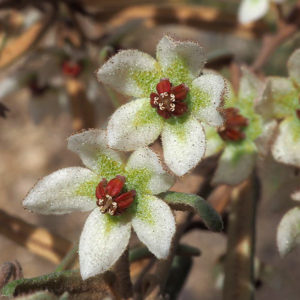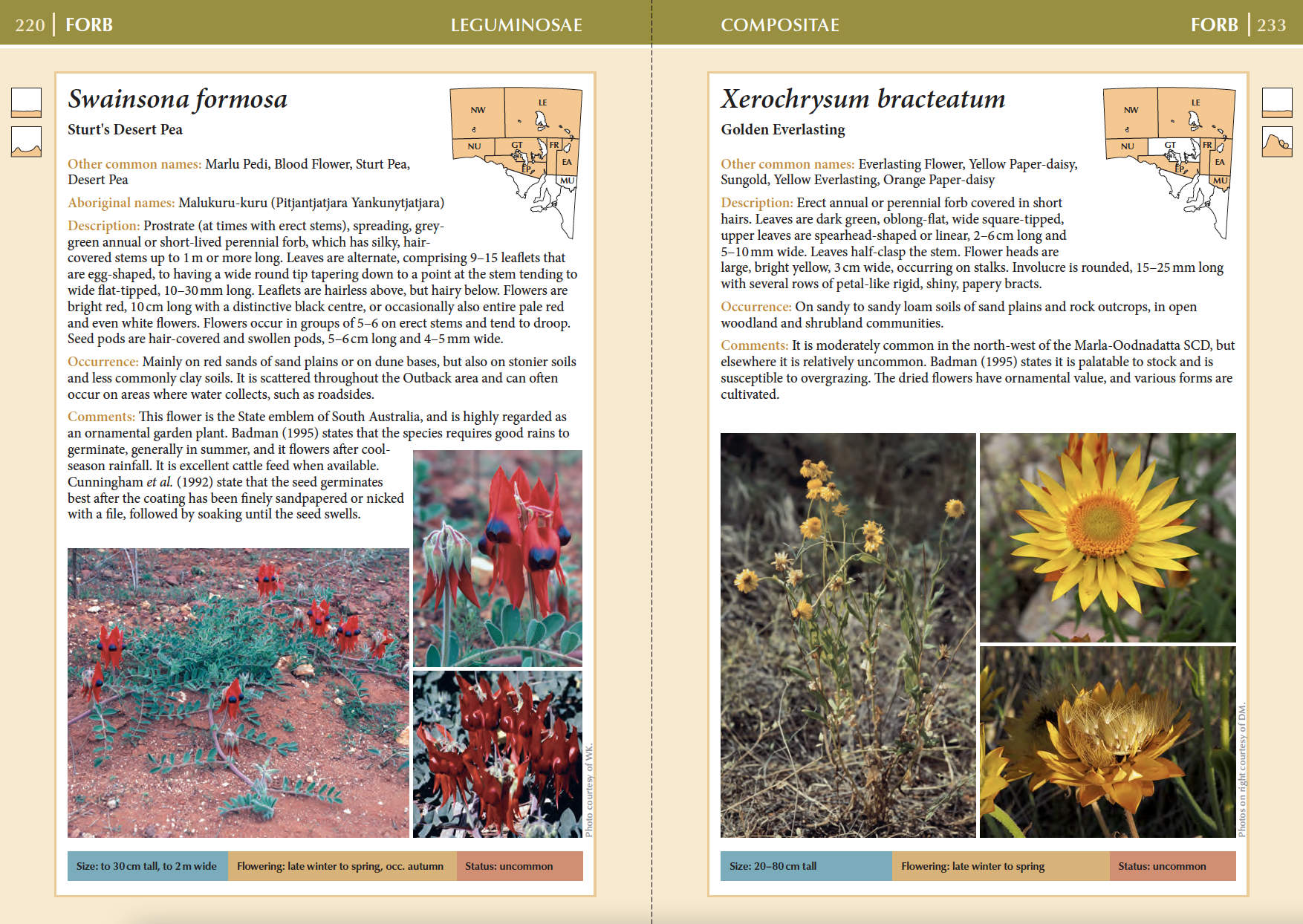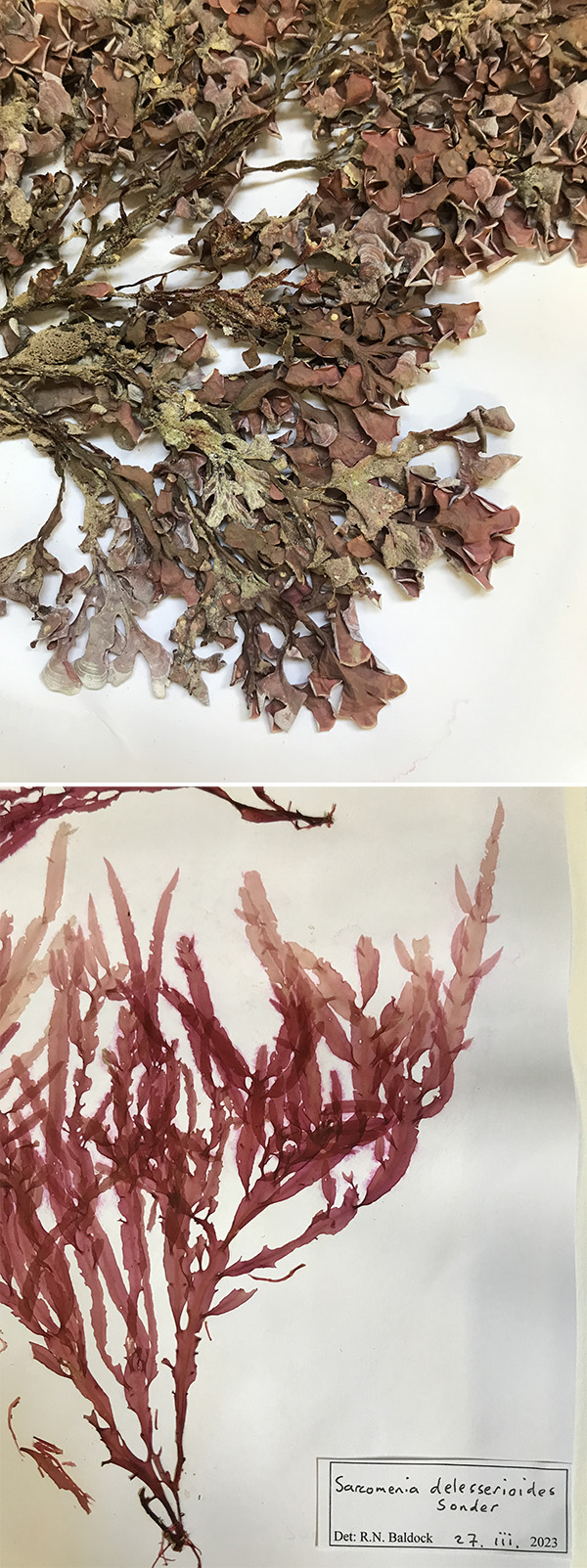A new family classification has recently been applied to vascular plants on the Census of South Australian Plants, Algae & Fungi. It is derived from an update of the Angiosperm Phylogeny Group classification (APG IV) for the orders and families of flowering plants, published in 2016. The new family numbers assigned in the Census are based on linear sort numbers presented in that paper. Detailed, technical information on plant families can be found on the Angiosperm Phylogeny Website.

Lasiopetalum bauerii (Slender velvet-bush), now in Malvaceae (formerly in Sterculiaceae). Photo: D. Murfett.
Many families from the previous classification remained unchanged, but just occupy a new position in the sequence reflecting recent advances in understanding of their phylogenetic relationships. Some correspond to old familes, but have adopted new names, others are entirely new familes that have been split from existing ones. Several major families have been redefined, with their genera being variously assigned to other families.
The following table shows ‘old’ families that have effectively been ‘split’:
| Old Family | New Family |
| AIZOACEAE | AIZOACEAE |
| MOLLUGINACEAE | |
| CAPPARACEAE | CAPPARACEAE |
| CLEOMACEAE | |
| CAPRIFOLIACEAE | ADOXACEAE |
| CAPRIFOLIACEAE | |
| EUPHORBIACEAE | EUPHORBIACEAE |
| PHYLLANTHACEAE | |
| PICRODENDRACEAE | |
| LILIACEAE | AMARYLLIDACEAE |
| ASPHODELACEAE | |
| ALSTROEMERIACEAE | |
| ASPARAGACEAE | |
| COLCHICACEAE | |
| DASYPOGONACEAE | |
| LILIACEAE | |
| PORTULACACEAE | ANACAMPSEROTACEAE |
| DIDIEREACEAE | |
| MONTIACEAE | |
| PORTULACACEAE | |
| POTAMOGETONACEAE | POTAMOGETONACEAE |
| RUPPIACEAE | |
| SCROPHULARIACEAE | PLANTAGINACEAE |
| OROBANCHACEAE | |
| PHRYMACEAE | |
| MAZACEAE | |
| SCROPHULARIACEAE | |
| ULMACEAE | CANNABACEAE |
| ULMACEAE | |
| UMBELLIFERAE | APIACEAE |
| ARALIACEAE | |
| ZYGOPHYLLACEAE | NITRARIACEAE |
| ZYGOPHYLLACEAE |
In addition to the above, the following 40 ‘old’ families have had a simple one-to-one change in the SA Census to a new family assignment and/or new name:
| Old Family | New Family |
| ACERACEAE | SAPINDACEAE |
| ADIANTACEAE | PTERIDACEAE |
| AGAVACEAE | ASPARAGACEAE |
| ASCLEPIADACEAE | APOCYNACEAE |
| AVICENNIACEAE | ACANTHACEAE |
| AZOLLACEAE | SALVINIACEAE |
| BAUERACEAE | CUNONIACEAE |
| BUDDLEJACEAE | SCROPHULARIACEAE |
| CALLITRICHACEAE | PLANTAGINACEAE |
| CENTROLEPIDACEAE | RESTIONACEAE |
| CHENOPODIACEAE | AMARANTHACEAE |
| CHLOANTHACEAE | LAMIACEAE |
| COMPOSITAE | ASTERACEAE |
| CRUCIFERAE | BRASSICACEAE |
| DIPSACACEAE | CAPRIFOLIACEAE |
| EPACRIDACEAE | ERICACEAE |
| FLACOURTIACEAE | SALICACEAE |
| GRAMINEAE | POACEAE |
| GUTTIFERAE | HYPERICACEAE |
| HAMAMELIDACEAE | ALTINGIACEAE |
| HIPPOCASTANACEAE | SAPINDACEAE |
| HYDROPHYLLACEAE | BORAGINACEAE |
| LABIATAE | LAMIACEAE |
| LEGUMINOSAE | FABACEAE |
| LEMNACEAE | ARACEAE |
| LIMONIACEAE | PLUMBAGINACEAE |
| MELIANTHACEAE | FRANCOACEAE |
| MYOPORACEAE | SCROPHULARIACEAE |
| NAJADACEAE | HYDROCHARITACEAE |
| PALMAE | ARECACEAE |
| PUNICACEAE | LYTHRACEAE |
| STACKHOUSIACEAE | CELASTRACEAE |
| STERCULIACEAE | MALVACEAE |
| TAXODIACEAE | CUPRESSACEAE |
| TILIACEAE | MALVACEAE |
| TREMANDRACEAE | ELAEOCARPACEAE |
| VALERIANACEAE | CAPRIFOLIACEAE |
| VISCACEAE | SANTALACEAE |
| ZANNICHELLIACEAE | POTAMOGETONACEAE |

Eremophia duttonii (Harlequin Fuchsia-bush), now in the family Scrophulariaceae (formerly in Myoporaceae). Photo: SA Seed Conservation Centre.
Many of the changes have been applied on the Australian Plant Census (APC) for some time, and were also adopted for the 5th edition of the Flora of South Australia.
Notable changes include the genera within Scrophulariaceae being reassigned into five different families, and the Myoporaceae (comprising Eremophila and Myoporum, as well as the WA genus Diocirea) being subsumed within the now more narrowly circumscribed Scrophulariaceae.
In South Australia. the former Liliaceae have become five separate families.
The milkweed family, Asclepiadaceae, is now incorporated within the Apocynaceae, the Centrolepidaceae within the Restionaceae, and the Sterculiaceae within the Malvaceae.
Significantly, Chenopodiaceae has been subsumed within Amaranthaceae, although this change is not currently applied to the APC.
Compiled by Herbarium botanist Peter Lang.






 Among this year’s recipients was
Among this year’s recipients was 




You must be logged in to post a comment.